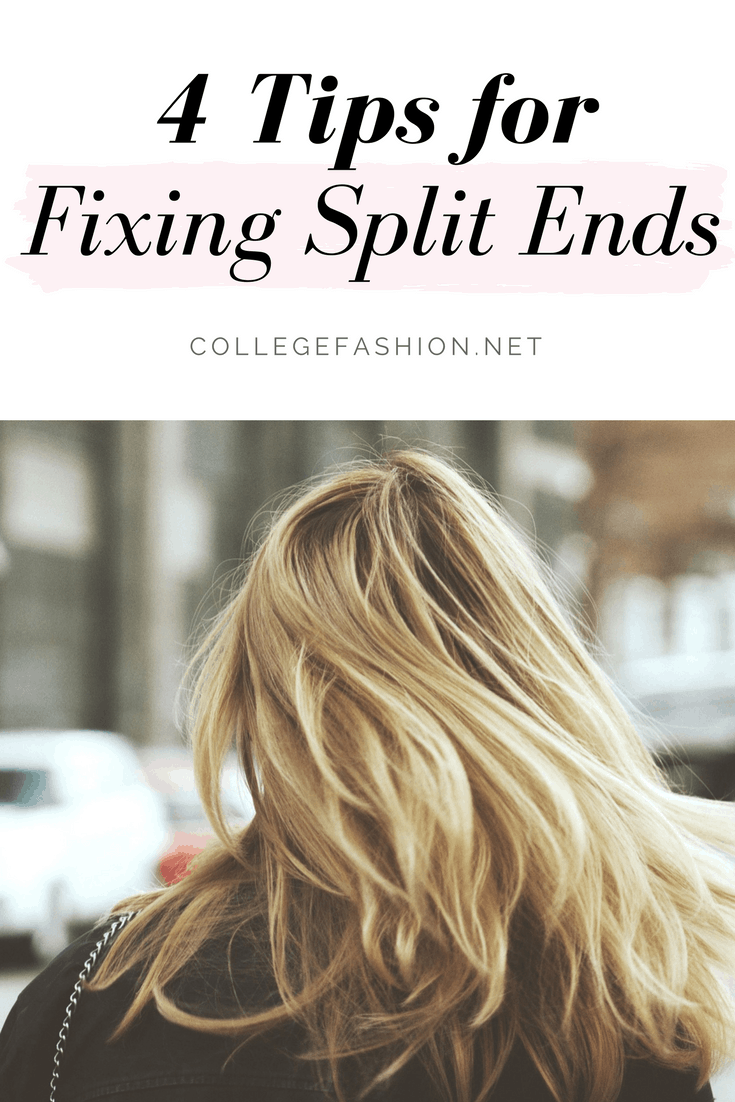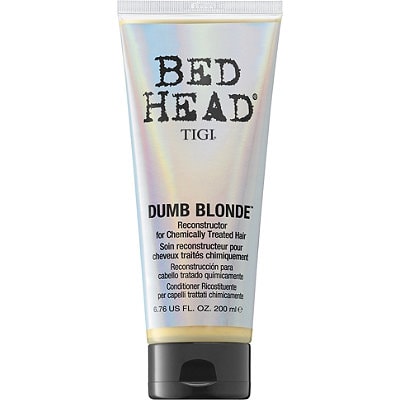
My New Year’s Resolution this year is to have better hair. And I need it – after a bunch of at-home bleaching treatments, color removers, and dyes, my hair is super crispy, dry, and frizzy.
In addition to swearing off permanent bleaches and dyes, here are some steps I’m following tips for fixing split ends to undo the damage I’ve done to my strands.
Related reading: How to Take Care of Bleached Hair – The Complete Guide
Table of Contents
Every Month: Get a Trim

No matter how many products swear to be able to repair your split ends, there’s really only one way to actually make them go away – and that’s with a pair of scissors.
If you prefer to go to a salon, ask for a ‘dusting’ – which is just cutting off the damaged parts of your hair while preserving the length.
If you (like me) would rather DIY, just divide your hair into small sections, and twist or bend with your fingers to make dry ends stick out, and trim away! You can also follow this quick YouTube tutorial which works like a charm.
Every Other Week: Use a Hair Mask

Once you’ve removed the split ends, it’s important to make the rest of your hair as healthy and hydrated as possible. Using a deep-conditioning mask is a great way to provide and seal in moisture for extra softness and shine.
If you prefer to buy a pre-made mask, there is an option for every budget and hair type – so just go out and find what appeals to you! In general, it’s best to avoid products containing silicone (which can prevent moisture from being able to enter the hair strand), mineral oil (which can weigh hair down), and alcohols that contain “prop” in their name (which can strip away natural oils to dry out hair). We shared one of our favorite masks here.
If you prefer to make your own mask, there’s plenty of options for you, too! You can make a great hair mask from things in your own fridge, such as coconut oil, eggs, avocado, or banana; all of which will help to strengthen and soften your hair.
Every Wash: Invest in Conditioner

As a college girl, you probably already know better than to wash your hair every day. Not only does daily washing make your hair extra frizzy and dry, it takes up way too much time in a busy schedule. However, what you do when you wash your hair is important: because water opens the pores of your hair, and shampoo washes away natural oils, it’s important to replenish hair every time you get it wet.
Related reading: The All-Time Best Haircuts for Frizzy Hair (+ Products & Tips)
While fancy shampoos might have hair-boosting ingredients or fancy scents, they’re not as important. Because shampoo doesn’t stay on the hair as long, and because it mostly stays on your roots, it won’t do much to affect how your ends feel.
Conditioner, on the other hand, is applied to your ends, and stays on your hair much longer, meaning that it has the power to make or break how healthy your hair looks and feels.
Like masks, look for conditioners with lots of natural oils such as argan, coconut, or jojoba; stay away from harsh ingredients like silicones, sulfates, and “prop” alcohols for the best results.
I personally rotate between protein-filling and smoothing conditioners, boosted with a normal drugstore conditioner to really saturate my strands, so that I can actually run my fingers through my hair without them getting stuck in straw-like tresses.
Every Day: Swear Off Heat Styling
For anyone with a hair resolution like mine, you’re in luck – this year, it’s all about natural, healthy hair styles. Trends such as balayage and babylights mean that harsh bleaching is going out of vogue, and many of the year’s hottest hairstyles revolve around natural, wash-and-go styles.
While I love super shiny straightened hair as much as anyone, hair is healthier when it’s not exposed to high heat. Instead, add shine with hair oils, and embrace your natural texture (be it curly, wavy, straight, or anything in between). If you do use styling tools, use the lowest heat setting you can, and use them sparingly with a heat protectant to prevent creating even more damage.
There are also tons of tutorials for heatless styling methods that can give your hair a little extra oomph without hurting it in the long run. I’m a huge fan of pin curls for big, voluminous waves!
Thoughts?
What are your hair goals for this year? Share your best damage-defying tips in the comments below!
